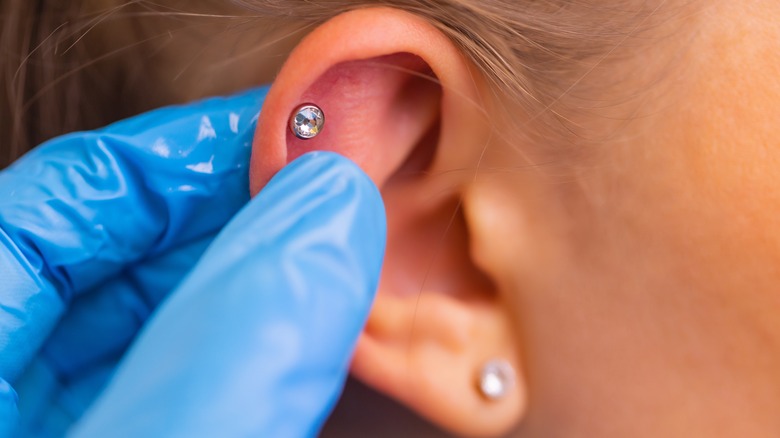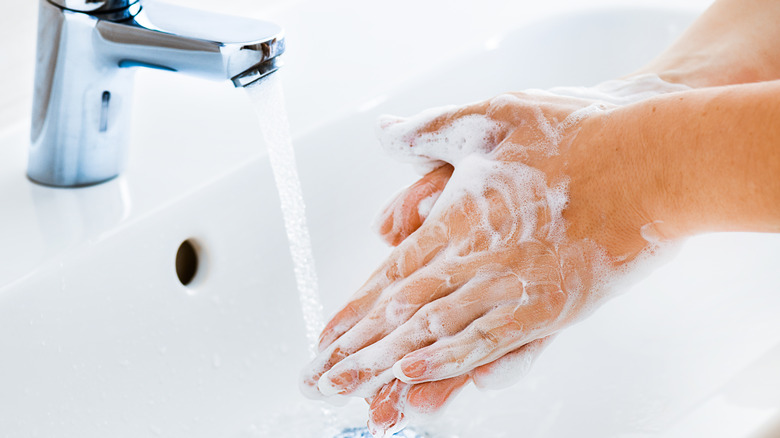Your Guide To Ear Piercing Aftercare
The practice of ear piercing dates back to 2,500 B.C., according to Reader's Digest. While a single lobe piercing was once considered a fashion statement, today's pierced ears often feature multiple piercings that span the entirety of the lobe and every reachable area of the upper and inner cartilage. Massively popular TikTokers like Mikayla Nogueira have contributed to the trend by posting their perfectly crafted ear-piercing ensembles online before big events.
The part of ear piercing that doesn't typically make it into influencers' photos and videos is aftercare. For those who grew up in the '80s and '90s, taking care of your new pierced ears was as simple as applying some piercing solution and painfully twisting your new jewelry multiple times per day. Have recommendations changed over the past 20 years? Here is everything you need to know about how to properly care for new ear piercings of all kinds.
Cleaning your ear piercings
During the first six weeks, you should cleanse your new piercing daily. However, as reported by The Spokesman-Review, solutions containing harsh ingredients like peroxide or alcohol are no longer recommended for wound cleaning and can actually prolong healing by drying out the skin and damaging tissue. Instead, wash your hands with gentle anti-bacterial soap and then use the same soap and warm water to clean your piercings. For the sake of convenience, you may want to complete this process while you're already in the shower. Once they've been thoroughly cleansed and rinsed, dry the piercings with a clean disposable tissue or paper towel.
In addition to this daily cleansing, plan to rinse the front and back of the area with a simple saline solution once or twice a day. It is also no longer recommended to twist your new earrings in order to avoid adhesion to the jewelry. According to SirenBodyJewelry.com, twisting can actually cause excess irritation, inflammation, and swelling that will require additional recovery time to reverse.
Encouraging healing
Outside of cleaning your new piercings regularly, there are measures you can take to encourage the healing process and prevent infection. Even if you're mindful of how often you touch your piercings, you're likely to do it from time to time without realizing it. In order to prevent the spreading of bacteria when this happens, be sure to wash and sanitize your hands often. As noted by Everyday Health, you should treat your handwashing regimen the same way you would if you were trying to avoid getting sick during flu season.
You'll also want to step up your grooming routine. Keep your hair clean and if it's long, consider pulling it back away from your ears on a daily basis until your new piercings have healed. Wash your face each morning and night. Since both your hair and your face produce sebum and oil that can transfer to your ears, keeping these areas clean will lower the chances of bacteria traveling to your piercings. Of course, you should keep an eye out for signs of infection such as burning, redness, and white, yellow, or green discharge just in case. These symptoms can also indicate an allergic reaction to the metal in earrings, according to the Mayo Clinic, so be sure to see your piercer or doctor right away if they occur to help determine the underlying cause.


